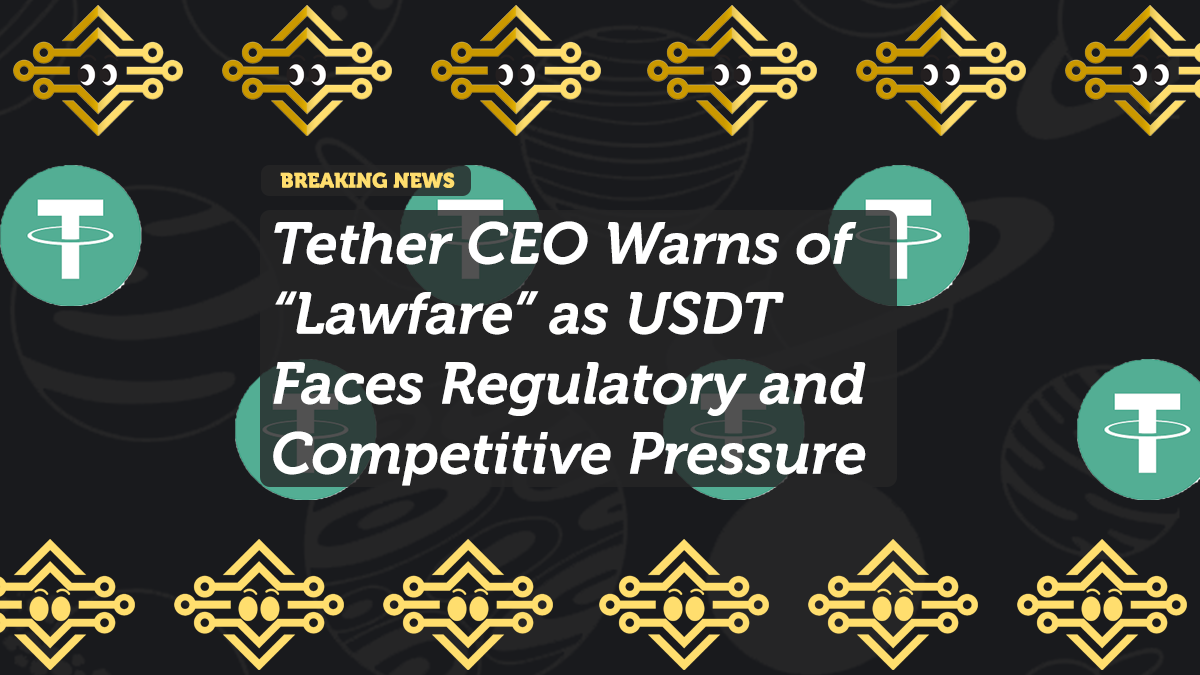
Tether CEO Warns of “Lawfare” as USDT Faces Regulatory and Competitive Pressure
The battle over stablecoin dominance is getting increasingly political.
On February 26, 2025, Tether CEO Paolo Ardoino warned that competitors are waging “lawfare” against USDT—a term blending “law” and “warfare” to describe legal and regulatory attacks meant to weaken Tether’s market position.
Key Takeaways:
Tether claims U.S.-based rivals like Circle (USDC) are lobbying regulators to restrict offshore stablecoins.
Proposed stablecoin laws could limit Tether’s access to U.S. Treasuries, forcing a major reserve restructuring.
Despite regulatory pressure, USDT remains dominant, processing $1T+ in monthly volume.
Is this a legitimate regulatory push—or a strategic attack by competitors looking to dethrone Tether?
What is “Lawfare,” and Why is Tether Concerned?
Paolo Ardoino took to X (Twitter) in the last 18 hours to claim that Tether’s dominance is under attack—not by innovation, but through regulatory pressure.
What Exactly is “Lawfare”?
Competitors allegedly influencing regulators to target Tether with new restrictions.
Stablecoin legislation could ban offshore issuers from holding U.S. Treasuries—harming USDT’s liquidity.
Potential regulatory “capture” by U.S. rivals like Circle (USDC) or Paxos (PAX).
“Is stablecoin regulation about consumer protection—or just a USDC vs. USDT turf war?”
If new rules favor U.S.-based stablecoins, Tether could lose its global dominance.
What’s at Stake? USDT’s Reserves Under Scrutiny
Tether’s reserve backing has long been a hot topic in the crypto space.
The Big Concern: Could Regulations Force Tether to Sell U.S. Treasuries?
- Tether holds $115B in U.S. Treasuries, making it the 18th largest holder worldwide.
- New laws might ban offshore stablecoins from holding Treasuries, forcing Tether to offload assets.
- JPMorgan speculates Tether could even sell its 82,000+ BTC holdings to rebalance reserves.
“If Tether is forced to liquidate U.S. assets, this is straight-up regulatory capture.”
If USDT is forced to restructure reserves, it could impact the entire crypto market.
Who’s Behind This Push? Are Rival Stablecoins Gaining an Edge?
Tether didn’t name names, but the implication is clear:
Circle (USDC) and Paxos (PAX) stand to benefit from USDT restrictions.
USDC markets itself as “fully regulated” and U.S.-compliant, appealing to institutions.
Regulations that hurt Tether could drive more volume to U.S.-based stablecoins.
Stablecoin Market Share (Feb 2025)
| Stablecoin | Market Cap | Monthly Volume | Regulatory Status |
|---|---|---|---|
| USDT (Tether) | $118B | $1T+ | Offshore (British Virgin Islands) |
| USDC (Circle) | $36B | $12B | U.S.-regulated |
| PAX (Paxos) | $7.5B | $1.5B | U.S.-regulated |
“USDT still dominates—but if laws push volume toward USDC, that could change fast.”
Tether sees this as a coordinated attack, but its rivals see an opportunity.
Is Tether’s Stability at Risk? What Happens Next?
If U.S. regulators act, Tether may need to:
✔ Shift reserves away from U.S. Treasuries—potentially weakening liquidity.
✔ Reduce U.S. institutional exposure, limiting growth.
✔ Double down on Bitcoin reserves to maintain decentralization.
If Tether Resists:
✔ Expect legal battles as Tether fights to maintain its position.
✔ U.S. institutions may pivot toward USDC, increasing its market share.
✔ Emerging markets could remain loyal to USDT, sustaining its global dominance.
“Tether isn’t just a stablecoin. It’s a financial juggernaut with political implications.”
Final Thoughts: Will Tether Survive the “Lawfare” Attack?
Bullish Case for Tether:
✔ Global demand for USDT remains high.
✔ Emerging markets rely on Tether for financial stability.
✔ Tether’s decentralized status keeps it outside direct U.S. control.
Bearish Case for Tether:
❌ New regulations could force USDT to restructure reserves.
❌ U.S. institutions may favor USDC, reducing liquidity.
❌ Ongoing legal scrutiny could shake market confidence.
What’s Your Take?
Is Tether being unfairly targeted, or is regulation long overdue? Drop your thoughts below!
















